Traditional Pavers vs. Permable Driveway: Pros and Cons
Most driveways are made from either asphalt or solid concrete, but the use of pavers to create semi-permeable driveways is a different aesthetic has grown in popularity. Pavers can be made from many different materials, but brick, concrete, natural stone, and plastic are some of the most common.
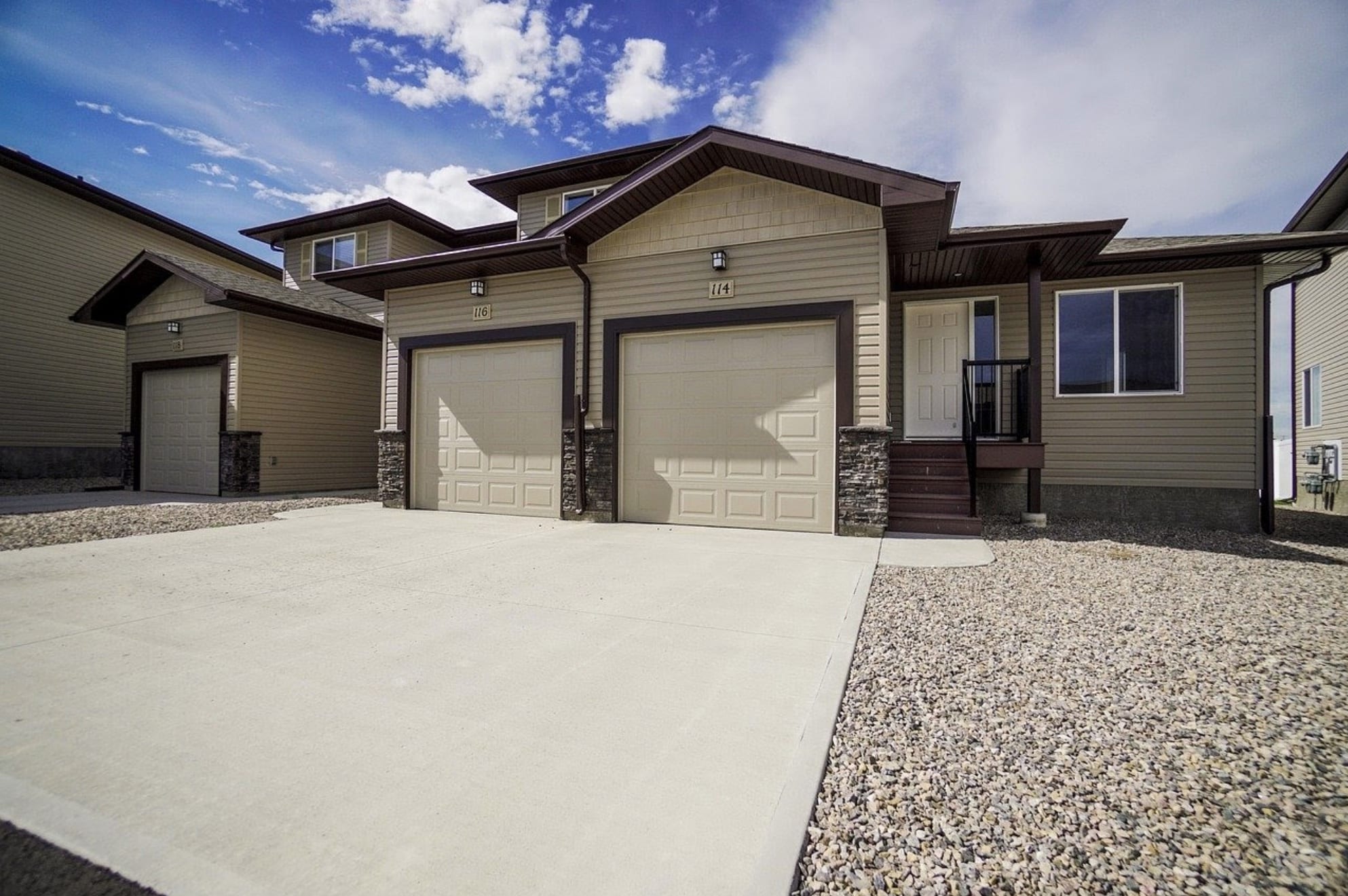
There are many pros and cons to each type of material, however. In case you’re interested in building a driveway out of pavers, let’s take a look at each type of commonly used material and see how they stack up against each other:
Brick
Brick pavers are one of the most popular types of driveway pavers for multiple reasons. They possess a look that’s hard to mimic, even with dyed concrete. They’re also one of the more expensive choices because of the material cost and labor involved in installation.
Brick is not typically permeable unless specifically installed with cracks between each paver where water can drain into a substrate of gravel. However, most brick pavers are installed over a sand substrate and sloped at 2% to facilitate drainage. They are not very durable and require a lot of maintenance throughout their lifetime. This includes frequent resealing to prevent water intrusion.
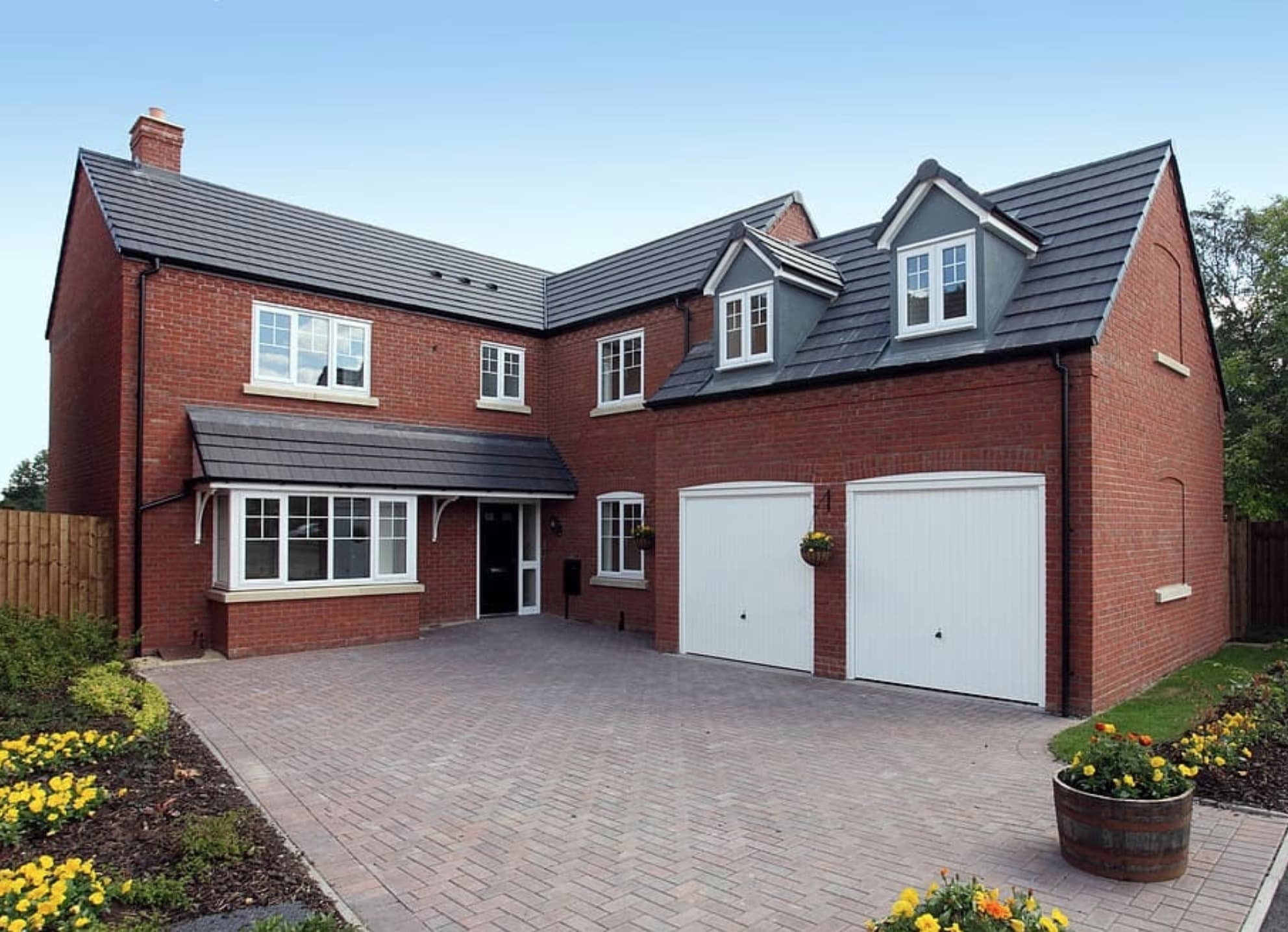
Brick can be brittle and it easily cracks in cold weather. It’s also vulnerable to extreme temperature fluctuations as well. Brick is very limited stylistically and the average brick driveway lasts about 25 years with proper maintenance.
Concrete
Concrete pavers are cheaper than brick and possess almost no permeability in most cases. There are permeable concrete pavers, though, which are much better at facilitating drainage. Regular concrete pavers are typically much stronger than slab concrete, making them more suitable for heavy vehicles.
Many concrete pavers come with a lifetime warranty. Installation can take many days to complete and concrete pavers are vulnerable to cold weather and temperature fluctuations, just like brick. Concrete also needs to be regularly maintained and sealed to prevent faster-than-usual deterioration. With proper maintenance, a concrete driveway can last anywhere from 25 to 50 years.
Natural Stone
Natural stone pavers come in the form of bluestone, flagstone, limestone, granite, and other natural stones. They are typically the most expensive form of pavers and can be used to achieve a very beautiful aesthetic that’s difficult to mimic with artificial materials. Some pavers like limestone are not considered very durable, but granite is one of the more durable materials you’ll find anywhere.
As with brick and concrete, permeability can be achieved by implementing designed cracks between the pavers where water can leak into a gravel substrate, but many homeowners prefer a non-permeable look, choosing to fill these cracks with a type of filler instead. Natural stone has more design options because you can choose from different colored pavers of different shapes and sizes.
Implementing designs and contrasting color schemes is easier than it is with brick, and you don’t have to use an artificially-dyed material like you would with concrete pavers. Natural stone is more durable than brick and concrete on average, lasting 30+ years when properly maintained. They do need to be periodically resealed, however.
Loose Gravel
Loose gravel on its own is a very cheap driveway material. Without pavers, it spreads and deteriorates rapidly. It needs to be constantly replenished and grated to maintain a level surface without rutting. The only pro is that it’s very inexpensive.
Plastic Pavers with Gravel
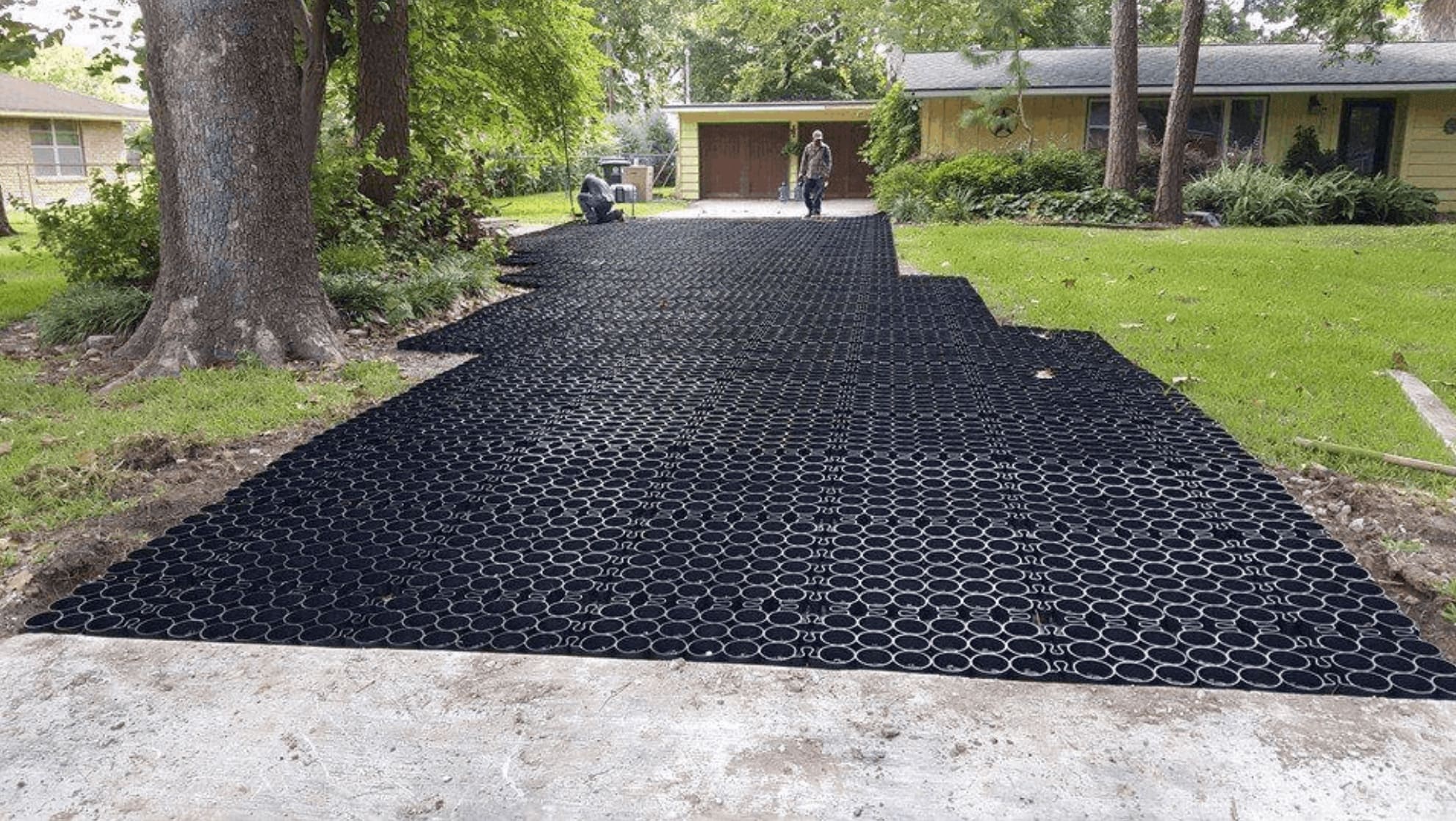
A permable gravel driveway stabilized with plastic pavers is one of the most inexpensive yet durable types of driveways you can build. This is because a DIY gravel driveway with pervious pavers is made from recycled plastic in most instances, which is incredibly durable.
The Permeable driveway cost is rather low, thanks to the low level of maintenance required to keep it fully functional. It can be filled with a variety of different types of gravel, allowing you full stylistic flexibility to create almost any aesthetic you like. Another benefit of a geogrid driveway is the permeability.
This is important. There are different types of permeable pavers. The web kind that fold flat do not hold up very well. The plastic grid pavers are a better option and have a much longer life without the maintenance.
There are different designs of plastic grid pavers. The best design incorporates heavy duty locking tabs and integral flex joints as found in those made by TRUEGRID.
TRUEGRID produces pavers with a 100%-permeability, allowing them to handle very heavy rainfall without flooding or causing runoff. TRUEGRID makes the highest quality permeable pavers for gravel driveways, with their pavers able to last up to 60 years despite requiring almost no maintenance.
TRUEGRID Makes the Best permeable Pavers, Hands Down
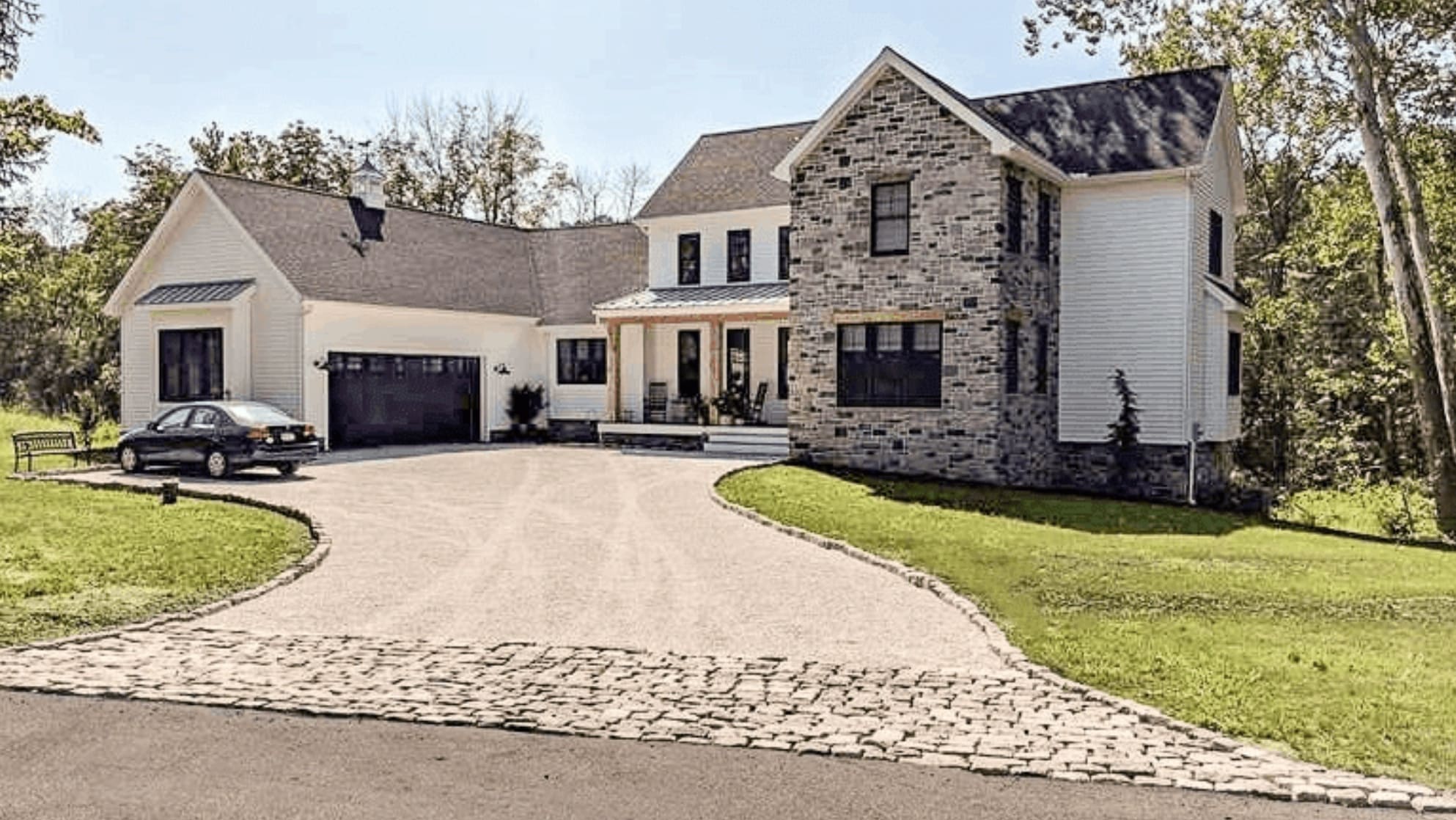
With products like TRUEGRID PRO LITE and TRUEGRID PRO PLUS, you can turn any natural surface into a durable and beautiful paved driveway. For TRUEGRID PRO and TRUEGRID PRO PLUS, the installation often takes as little as one day and can be completed with almost no heavy machinery or equipment.
Only a simple excavator and a heavy roller are needed to dig the driveway and compact the gravel into the pavers once they’ve been snapped together. Once in place, your TRUEGRID permeable driveway will outperform any other driveway pavers materials in terms of durability and permeability. It will also save you a lot of money on maintenance because it doesn’t need to be sealed or resurfaced.
If you want to simply stabilize a grass lawn and turn it into a surface that can function as a driveway, TRUEGRID ROOT is perfect for creating a permeable grass driveway. TRUEGRID ROOT is incredibly easy to install and only needs to be pressed into the surface of your lawn to complete the installation.
The grass will then grow through the pavers and render them nearly invisible, depending on how short you like to cut your lawn. This prevents grass from being torn up and ruts from developing as you park and drive on your lawn.
When you stack up each driveway paving product against each other, it’s clear that TRUEGRID pavers stand head and shoulders above the rest. If you’re interested in building a highly durable, eco-friendly, 100%-permeable, stylish, clean-cut driveway or you just want to turn your part of your existing lawn into a stabilized grass driveway, contact a pavement professional at TRUEGRID today for a quote.
There are many reasons why you might want to lay gravel on top of grass. Maybe you want to build a driveway out of gravel or you want to add a gravel extension to your already existing driveway.
You might be building a gravel walkway directly on top of grass, a patio, or some other type of paved area that you want to use gravel as a base for. Either way, you need to use the correct approach if you want to successfully add gravel to a grassy area.
There are a variety of ways you can go about it but you may want to pick one over the others depending on your preference and what you have at your disposal, as well as what kind of time scale you’re on. So let’s go over what the best approach is for adding gravel on top of grass.
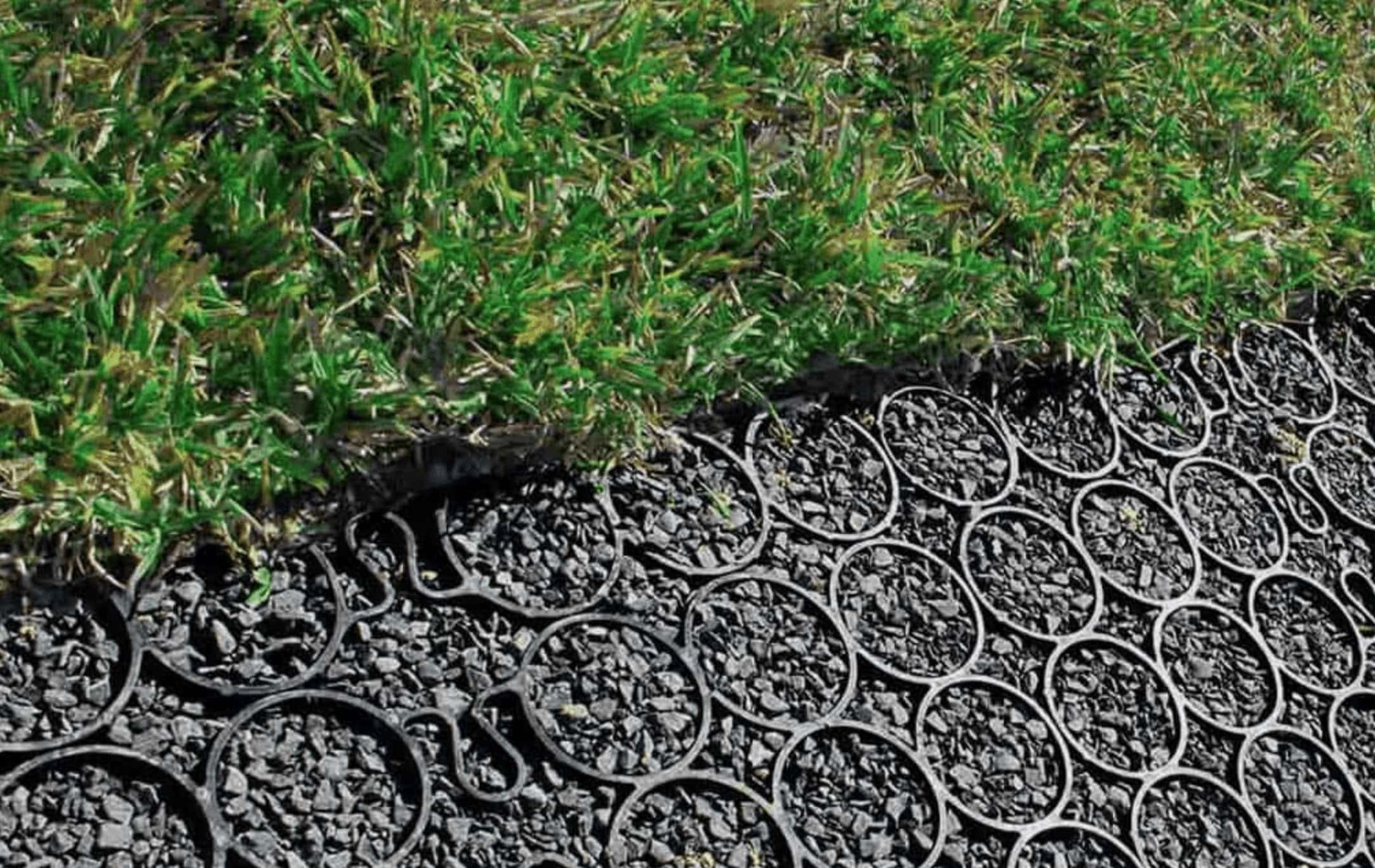
Removing the Grass
Placing gravel directly on top of grass and pouring a walkway isn’t a viable option. Even if you use stabilizing pavers, they’re likely to shift unless they’re installed over a gravel subsurface. If you lay plain gravel over the top of grass it’s going to migrate and spread, even if you put a weed cover beneath the gravel to prevent weeds from popping up.
The first step to adding gravel on top of grass is actually to remove the grass before you go any further. There are a few ways you can do this. If you just want to lay loose gravel you can use chemical sprays or a ground cover to smother the grass to death.
With chemical sprays, you’ll want to make sure you aren’t applying them on a windy day or on grass where people might unknowingly walk, because the chemicals can be very dangerous to both humans and animals.
Chemical sprays are not recommended as they are hazardous to people, animals, and the environment. They’re expensive and can leak into the soil which is decidedly not eco-friendly.
Ground covers, though they take longer, can within months kill all your grass effectively and they are cheap, effective, and eco-friendly as possible. If you have the patience and foresight to plan months in advance, they make for a great choice.
If you’re building a driveway, you might be wondering “Can I pour gravel on top of grass for a driveway?” The answer is no. You need to dig it up. Even if you’re laying pea gravel right on top of grass, it’s still going to be a problem.
However, just laying loose gravel on topsoil will cause it to migrate, especially if it’s going to be exposed to any consistent foot or vehicle traffic. You’ll have to keep reapplying gravel and grating the area to keep it even. This method is also not as permeable as using stabilizing pavers to secure the gravel.
Permeable Pavers Are the Best Choice for Installing Gravel in Grass
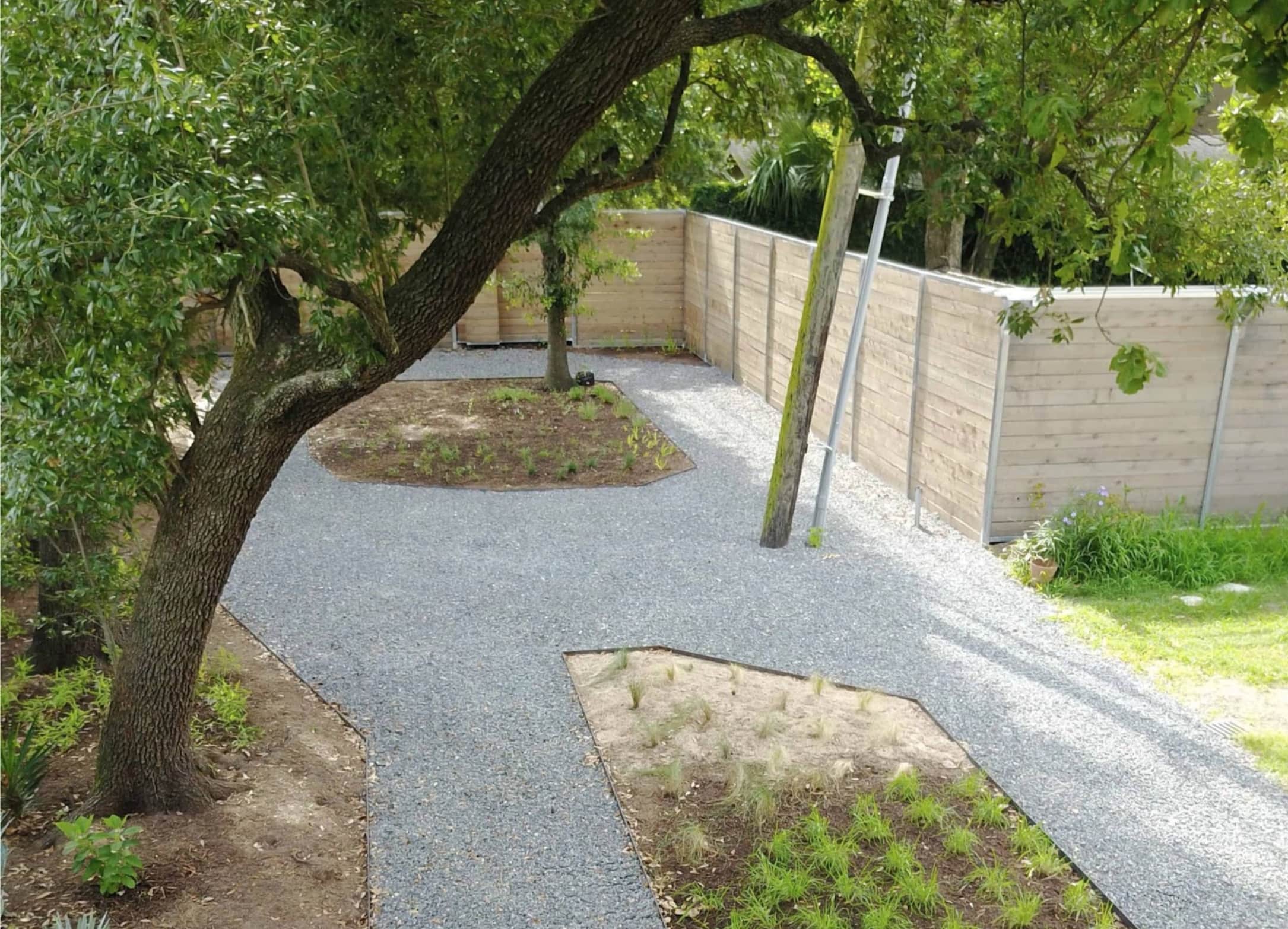
Many people who have needed to install pavement in grassy areas have wondered things like, “Can you build a gravel road on top of grass?”, and “Can you lay gravel on top of grass?” The short answer is no, but there is a workaround.
By digging up your grass and using pervious pavers to stabilize it, you can install gravel in a grassy area and maximize its durability and longevity while also improving its permeability.
Let’s say you want to install a new driveway or just add some traction to a grassy area for parking and driving, though. The answer to the question “Can I put gravel on top of grass?” would still be no. At least, not if you want gravel pavement that won’t spread, break down, or cause ruts.
TRUEGRID Makes the Highest-Quality Permeable Pavers for Gravel
Whether you want to build a gravel driveway, walkway, or any type of gravel surface, TRUEGRID PRO LITE and TRUEGRID PRO PLUS are the best choices. They trap gravel in place and prevent it from ever spreading or rutting. They’re also incredibly easy to install, taking less than a day to complete in most cases.
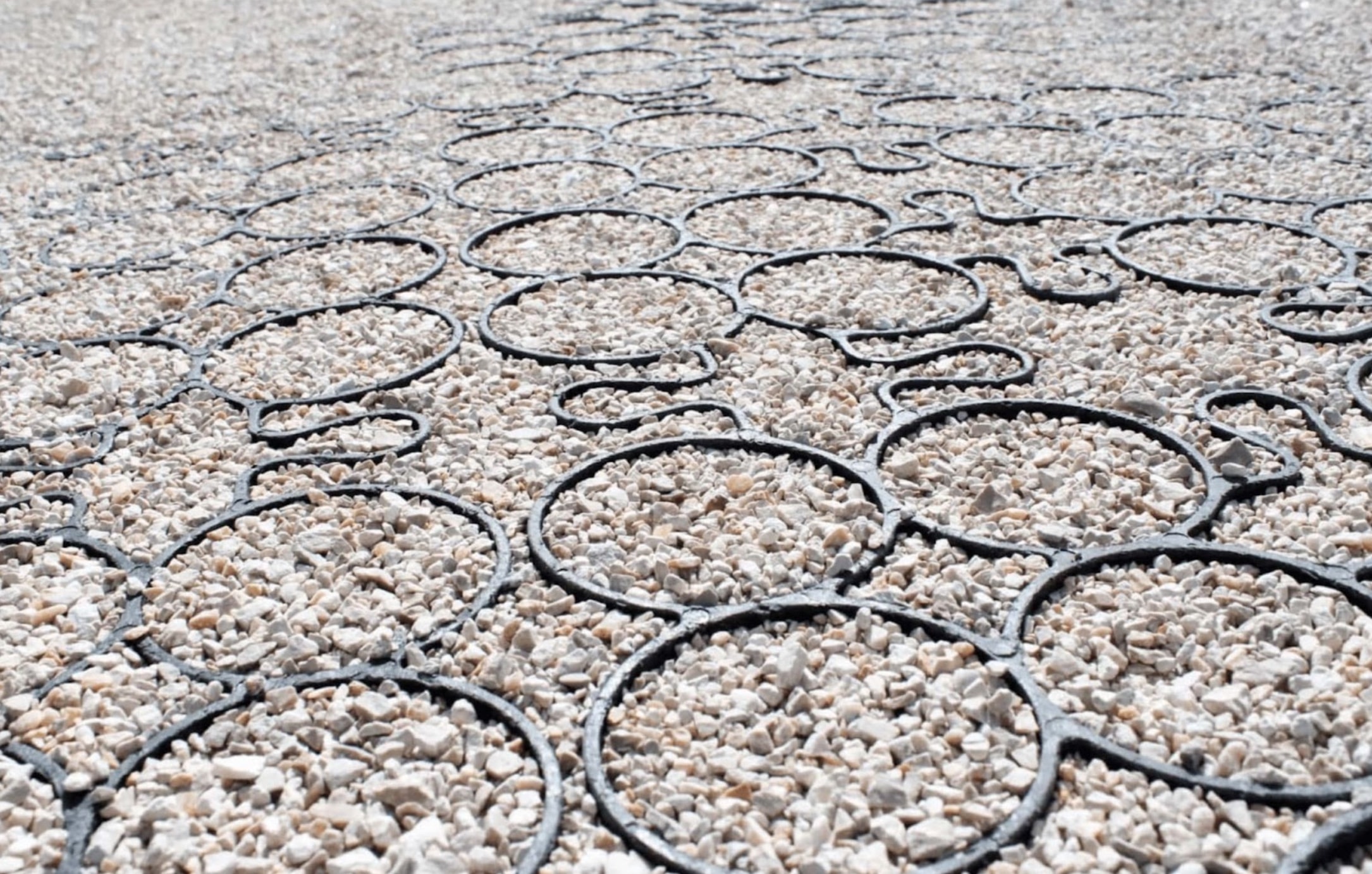
Installation involves excavating the area to a depth of 6 to 12 inches, placing a piece of fabric at the bottom to prevent gravel migration, and filling the excavated pit with gravel. Afterward, the gravel is compacted and the pavers are snapped into place over the top, at which point more gravel is poured over them and pressed into them with a heavy roller.
Not only does this method of installing gravel over grass not require chemical sprays, it’s even more eco-friendly than using a ground cover to kill the grass because of the increased level of permeability that TRUEGRID pavers possess.
It’s safe to say that if you want the most durable, stylish, eco-friendly, affordable, and easiest-to-install gravel driveway or walkway, TRUEGRID permeable pavers are by far the best option available on the market. If you’re interested in procuring these innovative pavers for yourself, contact a pavement professional at TRUEGRID today for a quote.
If you own a commercial business, parking is a huge part of your ability to operate effectively. Most people commute to work in a vehicle, so your parking lots need to be able to accommodate not just your entire workforce, but visitors and customers as well.
Building a parking lot may not seem like something that takes very much effort or planning, but it can actually be more complex than you might think. Calculating the area of your parking lots, for instance, is something that can be done in a number of different ways and you might want to opt for one strategy over another depending on your specific situation.
So, in case you’re interested in the nuts and bolts of building commercial parking lots, let’s take an in-depth look at just how parking area is calculated.
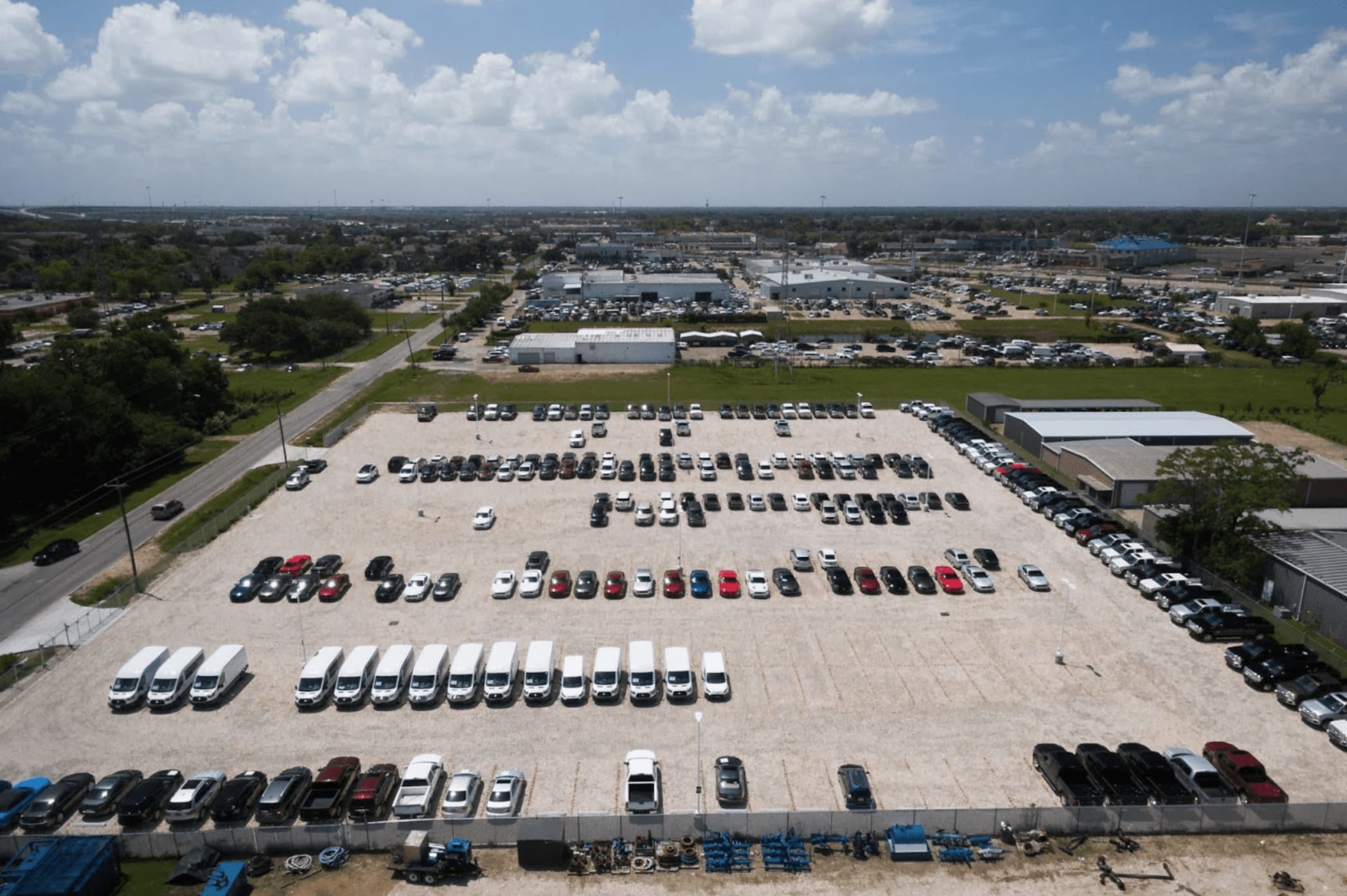
Determining Your Parking Ratio
You might be wondering, how is parking area calculated? It’s typically calculated by determining your parking ratio. Your parking ratio is the ratio between the size of your parking lot and the size of your building.
Bigger buildings facilitate more people, so they need more parking spots for those people to park their vehicles. The parking ratio of your building is determined by dividing the number of parking spaces in your lot by the square footage of your building (in thousands of feet).
For example, you’ve got a building with 40,000 sq. ft. of space and 200 parking spots in your lot. You would divide the 40,000 sq. ft. by the 200 spots to arrive at a parking ratio equaling 5 parking spots for every 1,000 sq. ft. of space in your building.
The size of your lot and the square footage of your building are directly correlated, meaning that even if you had a lot with 210 spaces, for example, it would still be considered a smaller lot than a 200 space lot if it was paired with a building totaling 50,000 sq. ft. This is because the parking ratio would come out to about 4.2 spaces per 1,000 sq. ft.
Parking ratios are very useful for easily determining how big your lot should be as well as comparing different buildings and their parking lots against one another. However, there’s more to determining the correct size of your lot than just calculating your parking ratio.
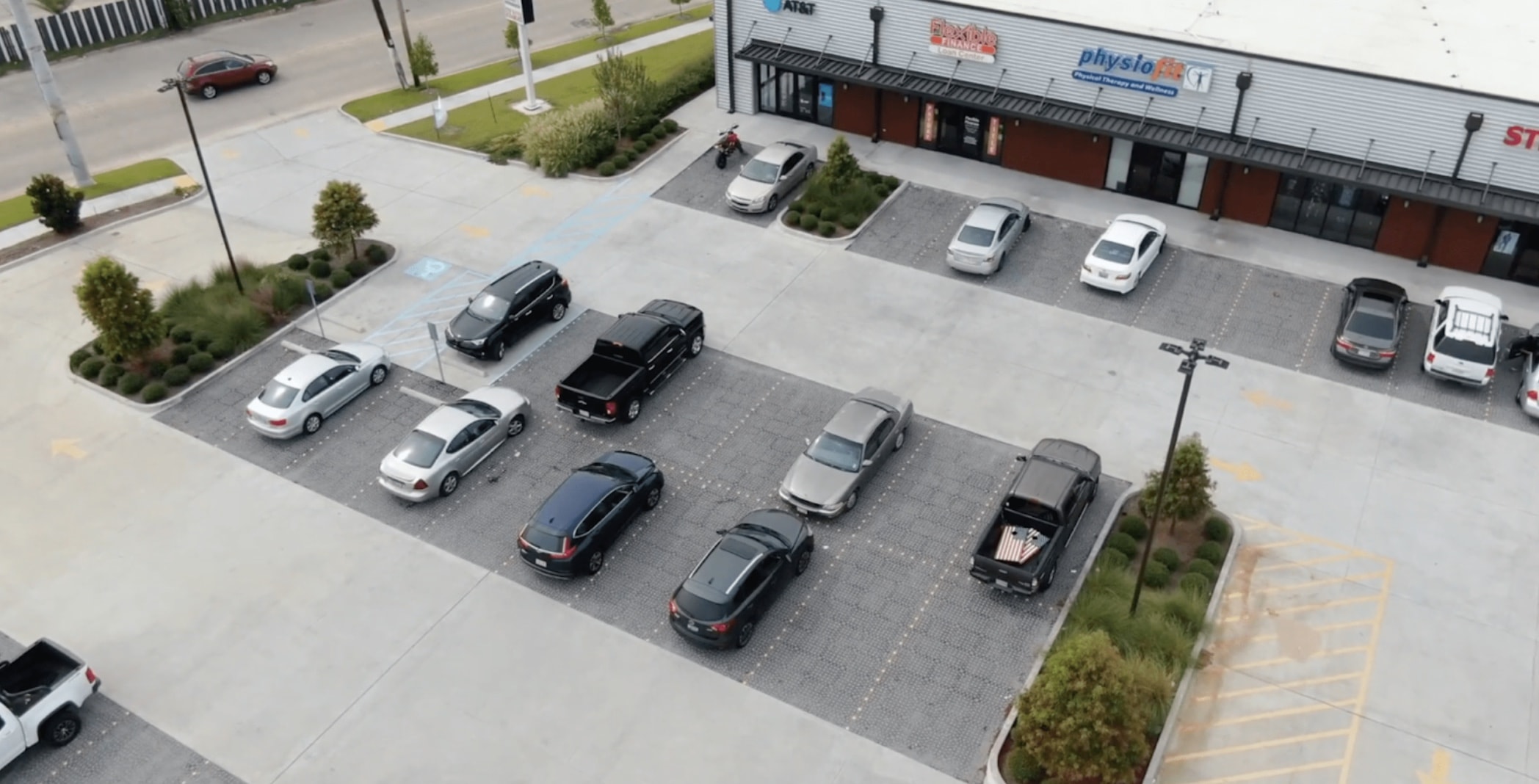
Usage factors heavily into calculating the area of a parking lot. An average-sized building that regularly seats many people such as a restaurant is going to need a bigger parking lot than a giant warehouse that only employs a few dozen people.
Local building regulations also put restrictions on how big your lot can be. Sometimes you can’t build the right size lot on a certain plot of land because of the local code. This means that the market demand for your parking lot might not always match up directly with local regulations, forcing you to adjust your strategy.
How to Build the Most Efficient Parking Lot
Aside from considerations like the size of your building, how many people will frequent it, and local regulations, there can be other things that you need to consider if you want to calculate the area of a parking lot. Drainage is one of them.
Many parking lots either have a drainage basin for storing stormwater somewhere on their property or they have drainage systems like grates and trenches built right into their lots. These obviously take up valuable space that could be used for parking, and are best done away with if possible.
The best way to eliminate these costly, land-consuming drainage systems is by building your lot with permeable pavement. TRUEGRID, for example, makes high-quality, durable permeable pavers that are capable of handling even extremely heavy rains without flooding.
This lets stormwater drain directly through your lot and into the ground below instead of directing it in the sewers or a storage basin. Permeable pavement allows you to maximize the efficiency of your lot and fit more parking spaces into it as well.
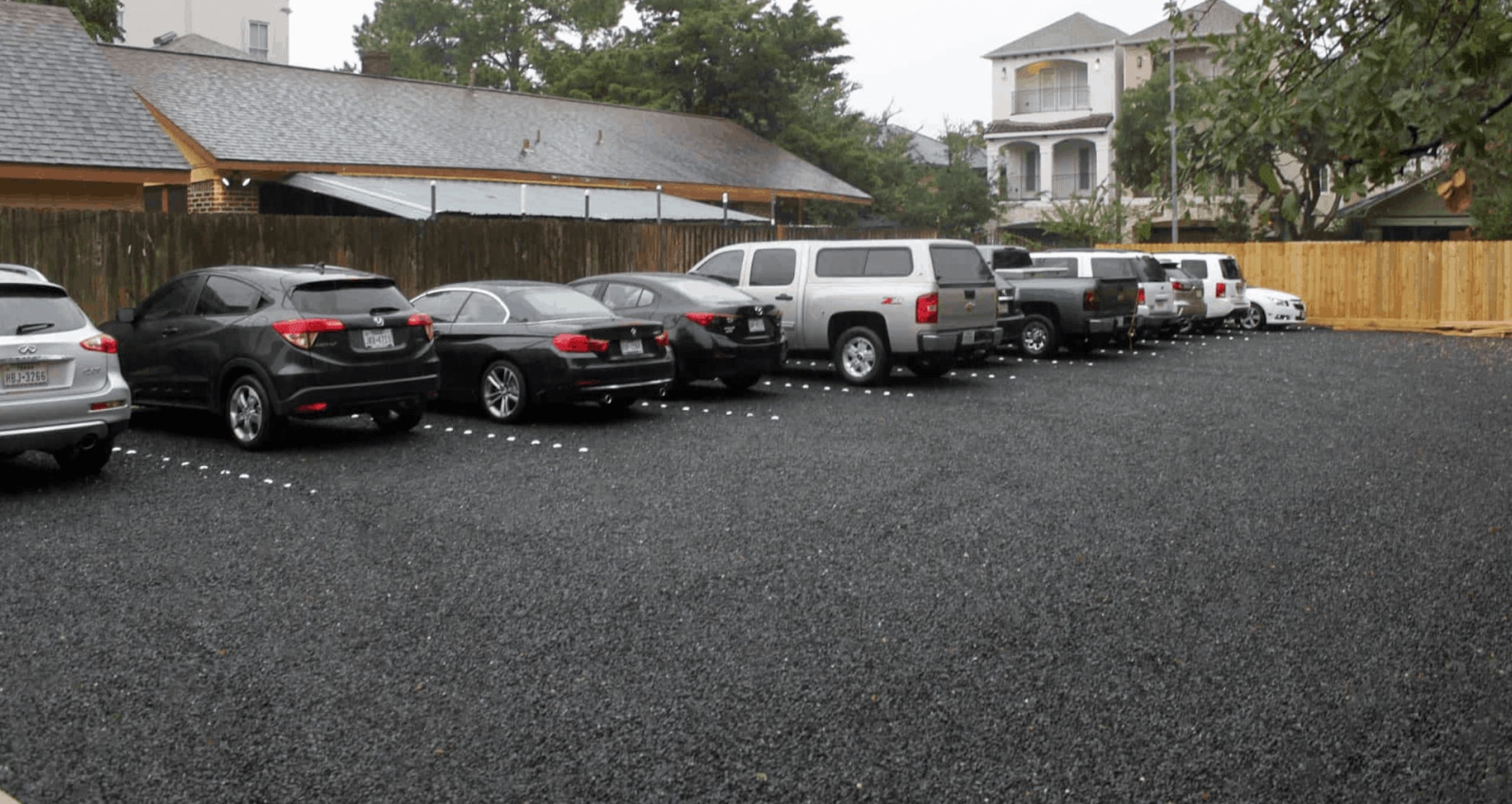
TRUEGRID is the Number One Choice for Building a Permeable Parking Lot
If you want a permeable parking lot that will outperform any other, TRUEGRID is the way to go. Both the TRUEGRID PRO LITE and TRUEGRID PRO PLUS systems are perfect for handling all types of vehicle traffic. Their pavers last up to 60 years with almost no maintenance required.
They also have all the accessories you need to accommodate your employees and customers such as high visibility markers, high visibility snow markers, high visibility reflectors, and space identification plates for fire lanes, handicap spaces, and more.
TRUEGRID HAS everything you need to maximize the efficiency of your lot, and the gravel-filled pavers themselves look clean-cut and professional, standing toe-toe with the finest asphalt and concrete lots.
The cost-efficiency of a TRUEGRID parking lot is also much greater than that of asphalt or concrete throughout its lifetime. This is mostly due to the almost non-existent level of maintenance required, even over the course of decades. If you want to make the parking lot construction process as simple and cost-effective as possible while also building a lot that will stand the test of time, look great, and perform expertly in all temperatures and weather conditions, contact TRUEGRID right now to get in touch with a pavement specialist for a quote.
When it comes to driveways, there are many different types and styles to choose from. Most prefer a typical, rectangular-shaped asphalt driveway, but there are plenty of homeowners who prefer an alternative type of driveway.
Ribbon driveways, for instance, are popular for a variety of reasons. Ribbon driveways look much different than the typical driveway and they have a number of benefits that attract homeowners.
There are many variations of the ribbon driveway and you might prefer one type over another, so in case you’re interested in this style, let’s take an in-depth look at how to build a ribbon driveway.
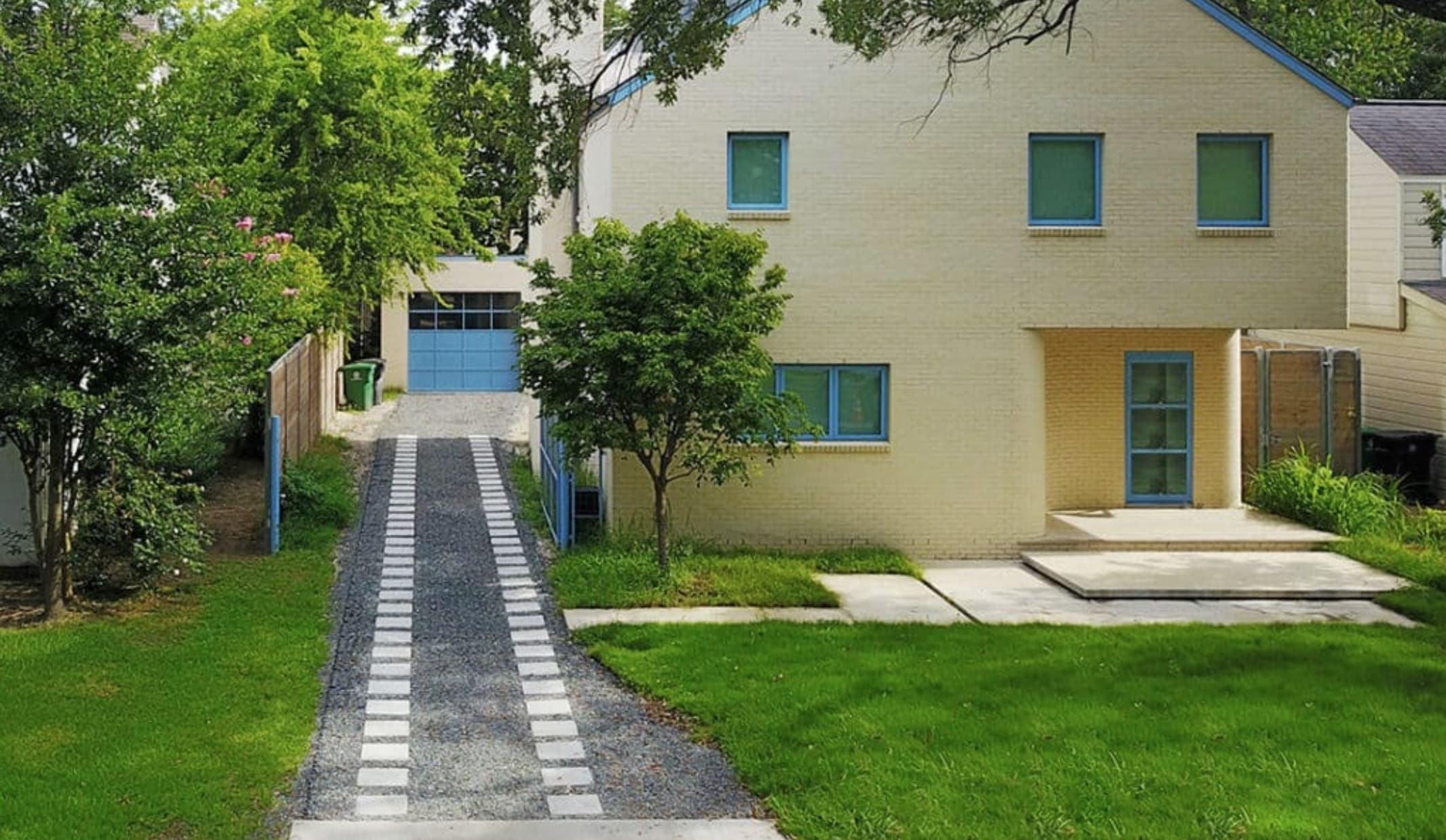
Benefits of a Ribbon Driveway
When it comes to ribbon driveway pros and cons, there are plenty of pros but not many cons. For starters, they tend to cost less because they use less material. Though you can implement a grass/gravel ribbon driveway, even types with concrete or natural stone pavers tend to cost less because the middle of a fill-in ribbon driveway usually consists of gravel.
Only the tracks of a modern ribbon driveway where your tires are meant to drive are built with more durable and expensive materials like concrete, tiles, brick, natural stones, or another type of material. This drives the ribbon driveway cost down considerably in many cases, because the ribbon driveway width of the middle section is usually about 3-feet wide.
There’s also the stylistic diversity that comes with implementing this type of driveway. There are a ton of different ribbon driveway ideas to choose from, each with its own unique look. Some of these include a ribbon concrete driveway, a paver ribbon driveway, a brick ribbon driveway, and a double ribbon driveway.
Choosing a Style
The first step of building a DIY ribbon driveway is to pick your preferred style. You can choose from a variety of different materials, but the most popular types are grass/gravel, gravel/concrete, and gravel/tile.
Ribbon driveways are specifically designed to be permeable, which is why gravel is incorporated in almost every type of design. Grass/gravel is the least expensive option, but gravel/concrete and gravel/tile have a bit more stylistic diversity.
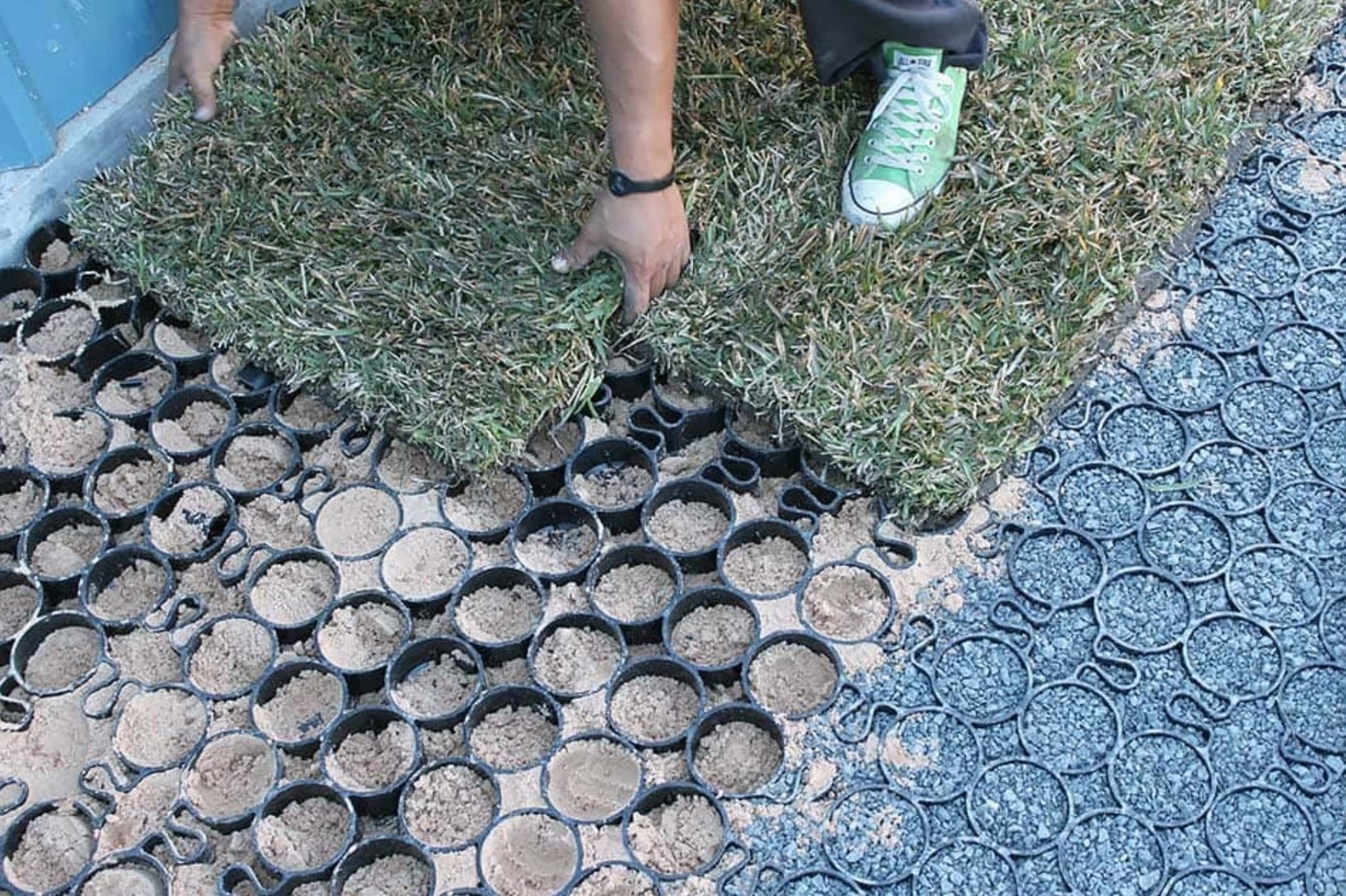
A grass/gravel ribbon driveway would be the quickest to install. Without pavers, you can complete your ribbon driveway DIY in a few hours or so. With stabilizing pavers included for the grass and/or concrete, it might take you a handful of hours. Either way, this type of ribbon driveway is a much faster install than other types.
A concrete ribbon driveway could take a day or two to complete because the concrete needs time to dry before it can be finished. Tile ribbon driveways also take a similar amount of time to install because of the labor involved in setting the tiles and grout.
Optimizing Your Ribbon Driveway for the Best Performance
If you want to build the sturdiest, most durable, permeable, and long-lasting ribbon driveway, there are a few things to keep in mind. First, if you want a planted center instead of a gravel center, you need to choose the proper ground cover. Low-growing plants like grass are the obvious choice, but you can also implement herbs, succulents, creeping phlox, ajuga, and/or vinca minor to change it up.
For gravel/concrete and gravel/tile ribbon driveways, you don’t necessarily need to stabilize the gravel in the middle with pavers because the borders of the tile and concrete keep the gravel in place pretty well. If you want to maximize the permeability of your ribbon driveway with gravel, stabilizing pavers are the solution.
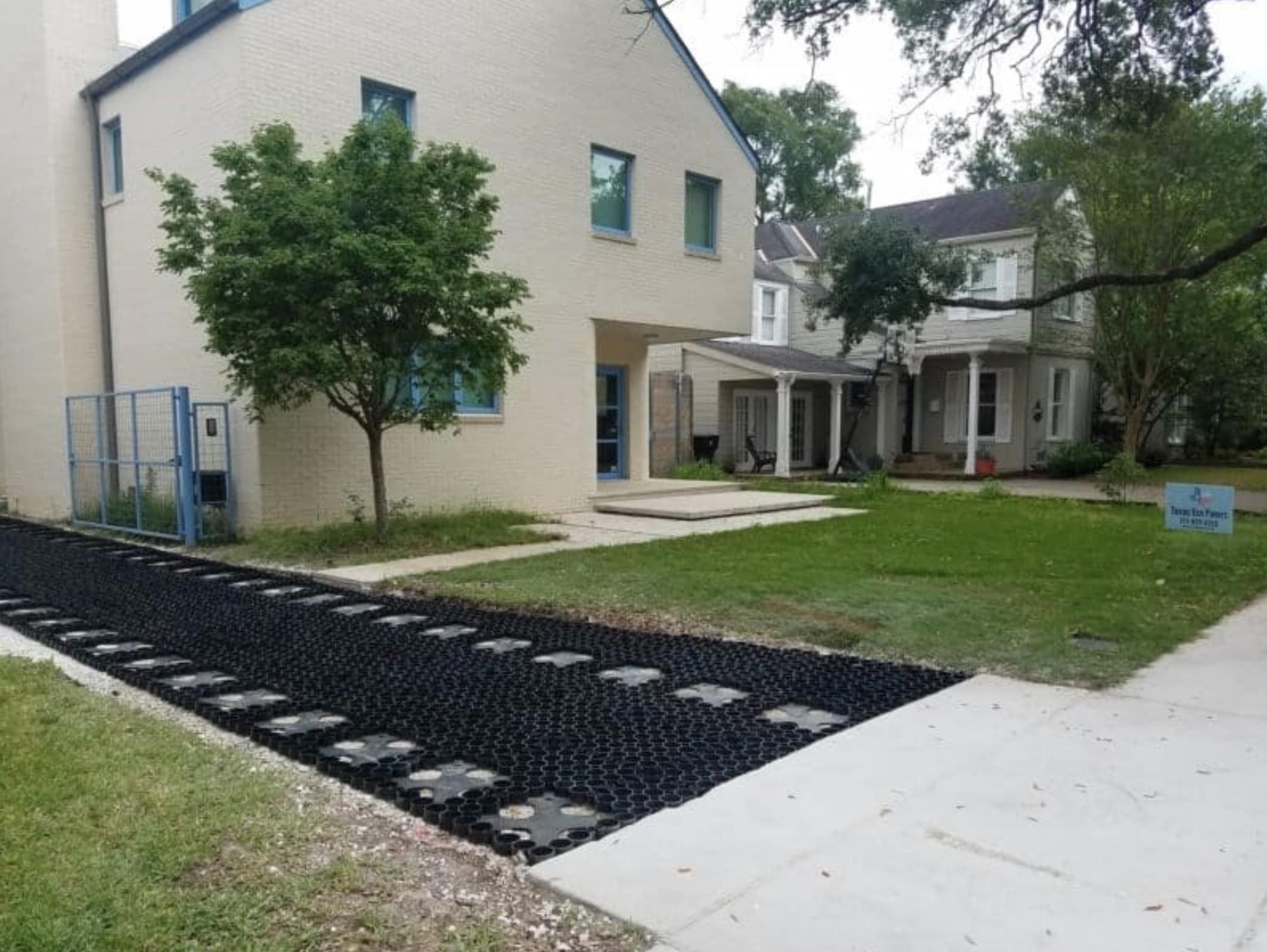
Ribbon driveway pavers provide a perfect ratio of open space and gravel that allows water to effortlessly drain through them and into the ground. TRUEGRID permeable pavers, for instance, can handle a very heavy amount of rainfall without any threat of flooding.
If you want to know how to build a ribbon driveway to withstand almost any level of rainfall, TRUEGRID PRO LITE and TRUEGRID PRO PLUS pavers are both an excellent choice for a ribbon driveway with pavers.
The installation process for these pavers is very simple and requires only a basic excavation and a heavy roller to compact the subsurface gravel and press it into the surface of the pavers once they’ve been snapped into place.
Let TRUEGRID Help You Build the Ribbon Driveway of Your Dreams
Most ribbon driveways incorporate gravel, either in the tracks themselves or in the middle section. By using TRUEGRID pavers to stabilize your gravel, you can ensure that they possess a much higher level of permeability. For tracks made from gravel, TRUEGRID pavers will increase the lifespan of this part of your ribbon driveway to about 60 years, with almost no maintenance required.
If you want a ribbon driveway that will perform to the best of its capabilities while looking great and lasting decades, get in touch with a pavement professional at TRUEGRID today for a quote.
As populations around the world continue to increase and the climate crisis grows more concerning with each passing day, the need for sustainable development in all shapes and sizes has never been higher. This means we need new construction methods, materials, and strategies that are as eco-friendly as possible.
Environmental Sustainability & Sustainable Development Examples
Thankfully, there are more than a few companies and products on the market right now that can go a long way towards achieving this goal. Let’s take an in-depth look at some sustainable development examples helping to change the world and preserve our future.
1. TRUEGRID Permeable Pavers

Impermeable paving like concrete and asphalt is a major environmental concern, and is not sustainable at the rate it’s being installed across the globe. This is because impermeable paving is not only sourced from non-environmentally-friendly places, but it requires more resources to produce and poses a flooding and pollution threat to the very ground it’s laid on.
Concrete and asphalt paving, as well as other types of impermeable paving, require drainage systems to manage their stormwater runoff. These require a lot of resources and time to install.
Permeable paving, however, provides a paved surface with equal to or greater than the functional value of impermeable paving, while allowing liquid to drain directly through it into a detention base that acts like a detention pond or into the ground itself. TRUEGRID pavers can be used to build driveways, commercial parking lots, fire lanes, industrial parking lots, and any other space that requires paving. The process of installing these pavers is much simpler than traditional paving, requiring far fewer resources and time, while putting much less of a strain on the local environment.
Filled with an aggregate, like gravel, the permeable pavers from TRUEGRID are just as durable as concrete or asphalt and require much less maintenance. They allow stormwater and other liquid to pass right through them, eliminating the threat of flooding as well as the need for wasteful drainage systems to be installed.
By working with mother nature instead of against it, these pavers are one of the best examples of sustainable development and we expect to see them implemented in both urban and rural areas far and wide in 2020.
2. ICF Construction from Fox Blocks
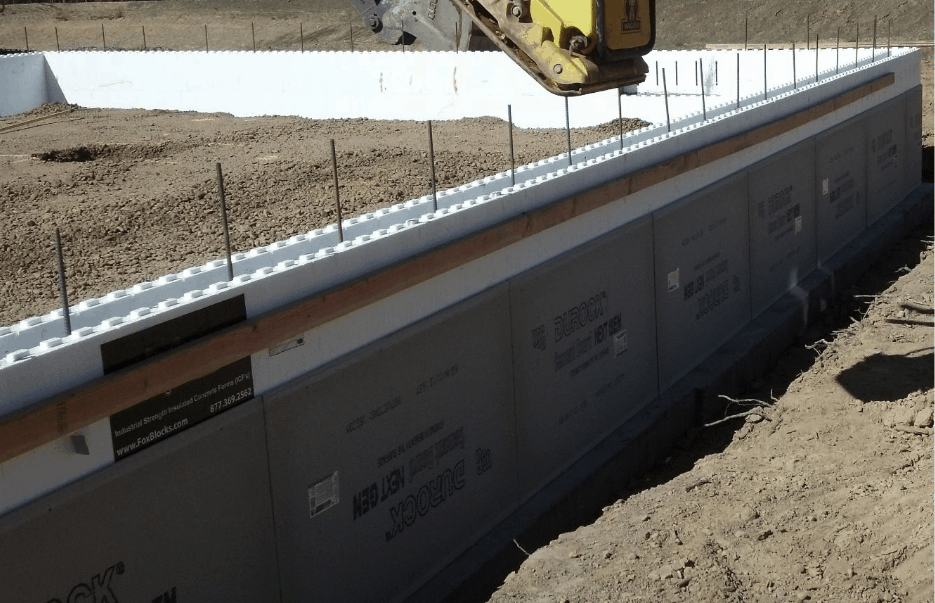
ICF construction has taken the world by storm in recent years, especially areas prone to extreme weather. Fox Blocks is leading the charge in this category with its environmentally friendly methods and materials. Insulated Concrete Forms are hollow concrete blocks reinforced by rebar.
They form a solid, continuous barrier against air and vapor, exceeding airtightness requirements in every municipality and region, as well as providing far superior strength and durability in the face of extreme weather like hurricanes, tornadoes, and more.
How Fox Blocks differs from their competition, though, is that their materials are specifically designed with eco-friendliness in mind. They do not off-gas and they aren’t made with any gases which are harmful to the ozone or our environment. They also require low levels of energy to build, and the process of doing so is incredibly efficient.
Fox Blocks are sustainable and will last the entire lifetime of a home or building. Because of their superior energy efficiency, they go a long way towards lowering overall energy usage and waste throughout the lifetime of a home or building as well.
3. Green Spaces

In 2020, the proliferation of green spaces within urban environments is expected to continue on a large scale. Green spaces are areas of trees, grass, and other types of vegetation located within primarily urban environments. New York City’s Central Park is one of the biggest sustainable development examples.
In addition to being a welcome aesthetic and a change of pace from the concrete and skyscrapers in urban areas, green spaces also provide real value in terms of sustainability. They help to improve air quality, recharge supplies of groundwater, reduce air temperature, and protect streams and lakes from polluted runoff. They also prevent soil erosion and help maintain the quality of water in the area.
4. Eco-Friendly Aesthetics
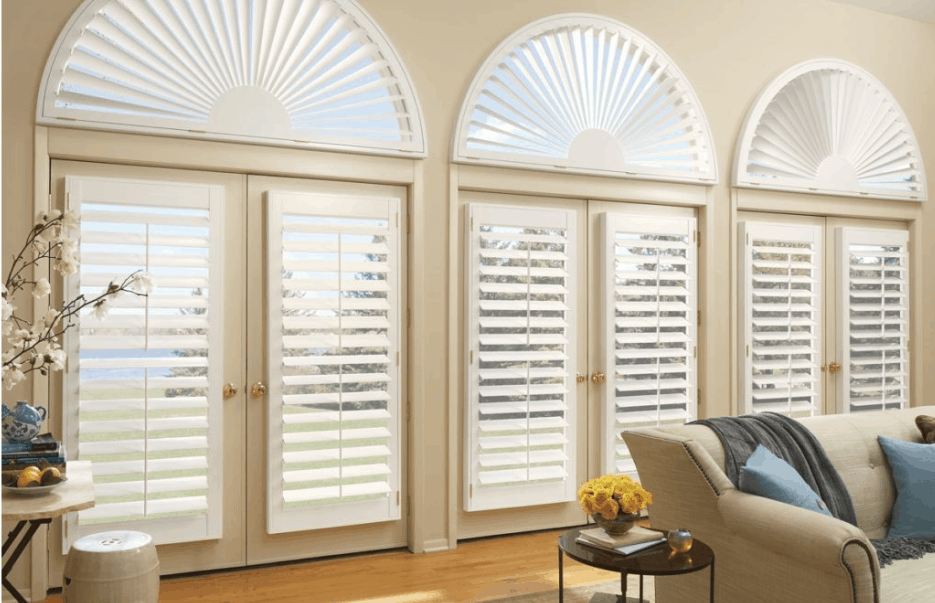
Louvers help to minimize air moisture intrusion, air pollution, and noise pollution in a building or home. Eco blinds from Blindsgalore are made from eco-friendly materials like reed, jute, bamboo, or sustainably harvested wood.
5. Solar Panels
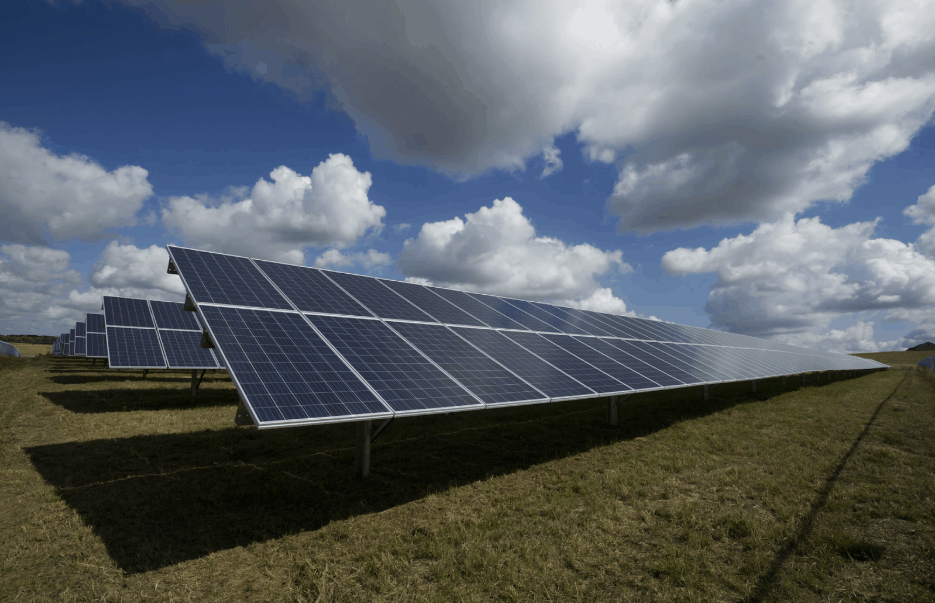
Solar panels are one of the most easily-recognizable examples of sustainable development. They can be fitted to buildings of any shape or size, and cost less to install than they ever have. Solar panels can provide enough power to make a building completely energy-independent and can even take the form of shingle-sized solar shingles which are interwoven with the rest of a building’s shingles.
6. Waste-to-Energy Recycling

This is a method of turning waste into energy and yet another one of the best sustainable development examples we’ll see next year. These facilities use combustion to turn non-hazardous waste into steam energy and electricity. Rather than being sent to a landfill, waste such as rags, absorbents, PPE, and organic debris are combusted and used to provide energy, reducing a building or area’s dependence on external energy providers.
7. Water Treatment Plants
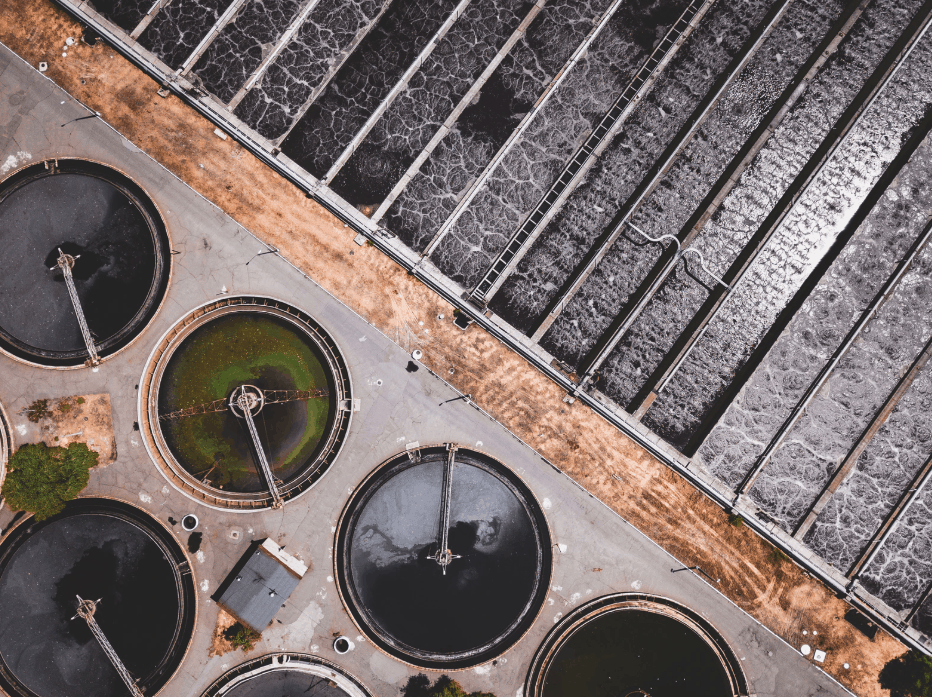
These plants intake oily water, bases, and water-based acids and turn them into clean water that can be used for industrial purposes. Not only does this help eliminate pollutants from the water cycle, it also reduces the need for outside water providers. This makes water treatment plants another one of our favorite sustainable development examples for 2020.
8. Wind Turbines

Wind is essentially free energy, and harnessing it with wind turbines can help new areas of development to be more sustainable. Combined with other sustainable development examples, these can be an integral part of a larger sustainability-based strategy.
Sustainable Development is Key in 2022
New developments of land will need to focus heavily on sustainability in 2022. These examples of sustainable development are expected to be some of the most widely-implemented and effective methods for sustainability as we move into the new decade.
Hopefully, by using these products and strategies, we can break new ground in the fight against global warming and protect ourselves from new impending disasters and financial hardships.

